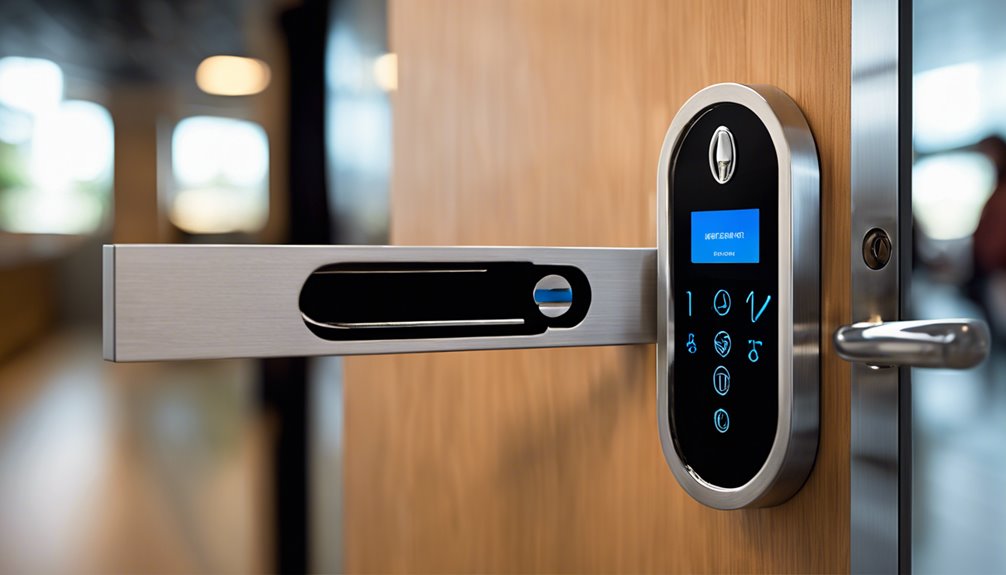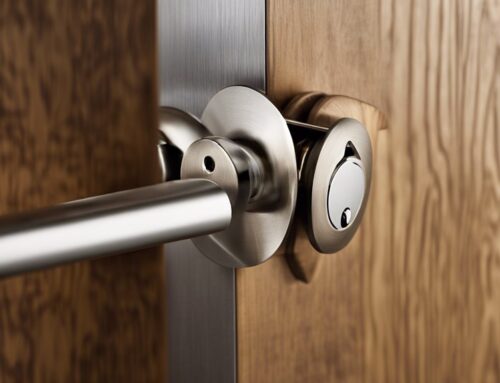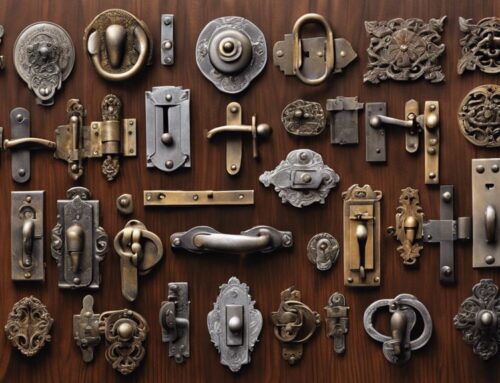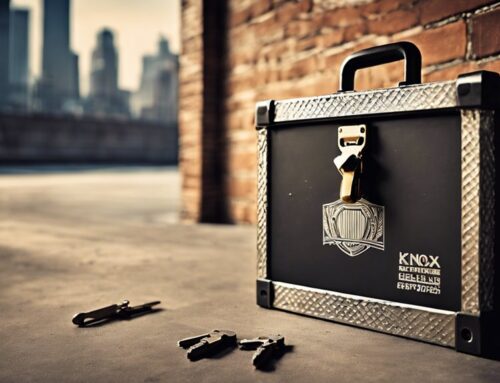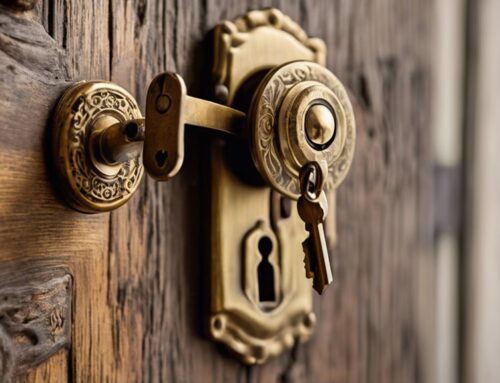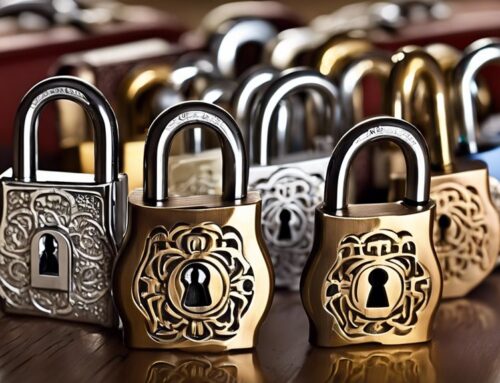Imagine standing at the entrance of a high-tech facility, your keycard glinting like a magician’s wand poised to open a domain of possibilities. As you reflect on the evolution of access control, it becomes clear that keycard lock systems are on the brink of transformation. With advancements in biometric authentication and mobile credentialing, you’re left to contemplate how these innovations will redefine security and convenience in your daily life. The landscape of access control is shifting rapidly, and understanding these changes is vital to steering through what lies ahead.
Key Takeaways
- Future access control will leverage biometric authentication in keycard systems, enhancing security through unique physiological trait verification.
- Cloud-based keycard systems will enable remote management and analytics, improving operational efficiency and real-time monitoring.
- Mobile access solutions will become prevalent, allowing smartphones to function as virtual keycards for increased flexibility.
- Integration with IoT and multi-factor authentication will provide layered security, improving overall safety against unauthorized access.
- Scalability and modular designs in keycard systems will ensure organizations can adapt to changing security needs without significant infrastructure overhauls.
Key Trends in Access Control
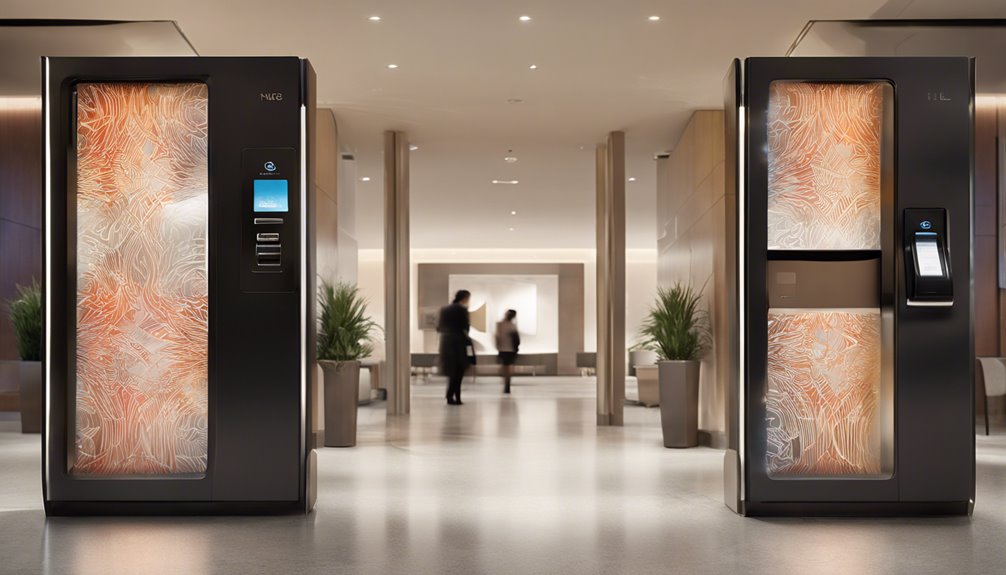
As businesses increasingly prioritize security, understanding key trends in access control becomes essential for safeguarding assets and personnel.
One key trend is the integration of biometric authentication, enhancing access security by relying on unique physiological characteristics. You’ll find that this reduces the risk of unauthorized entry far more than traditional methods.
Additionally, cloud-based access control systems are gaining traction, allowing for remote management and analytics capabilities, streamlining operational efficiency.
You should also consider the emergence of mobile credentialing technology, enabling users to manage access via smartphones, thereby combining convenience and security.
Finally, organizations are focusing on zero-trust principles, necessitating continuous verification even after initial access, which pressures you to adapt your security framework rigorously.
Advancements in Keycard Technologies
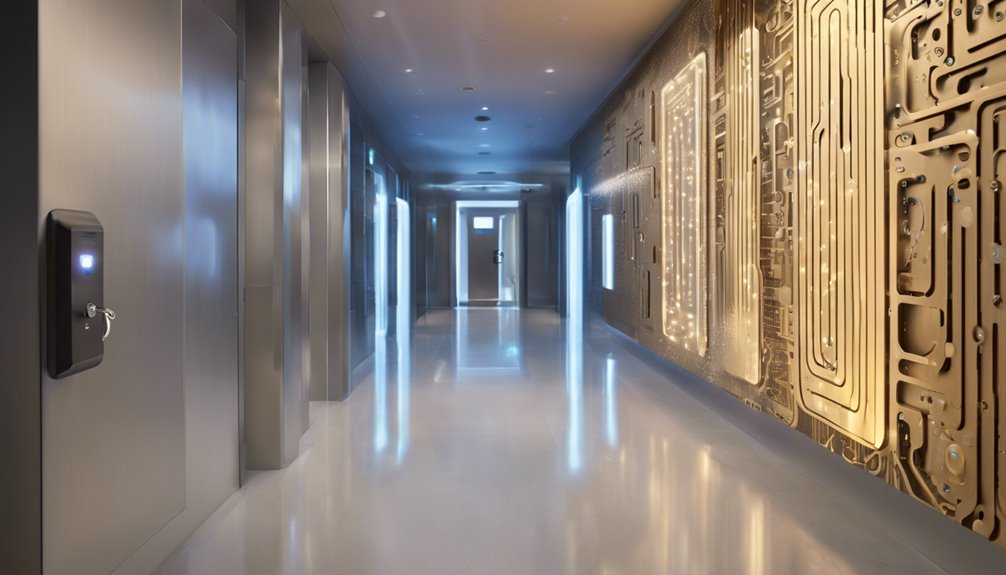
While traditional keycard systems have served as effective access control solutions, recent advancements are revolutionizing their functionality and security. Enhanced encryption technologies now safeguard data transmission between cards and readers, markedly reducing unauthorized access risks.
Next, you’ll appreciate the shift towards contactless cards utilizing Near Field Communication (NFC) and RFID, which enable quicker and more secure interactions, enhancing user convenience.
In addition, the incorporation of mobile access solutions allows smartphones to function as virtual keycards, providing users with flexibility and scalability.
Innovations like anti-cloning features and unique card identifiers are also essential, providing an additional layer of protection against keycard forgery.
As these technologies evolve, you’ll find that the future of keycard systems is increasingly robust and user-centric.
Integration With Biometric Systems
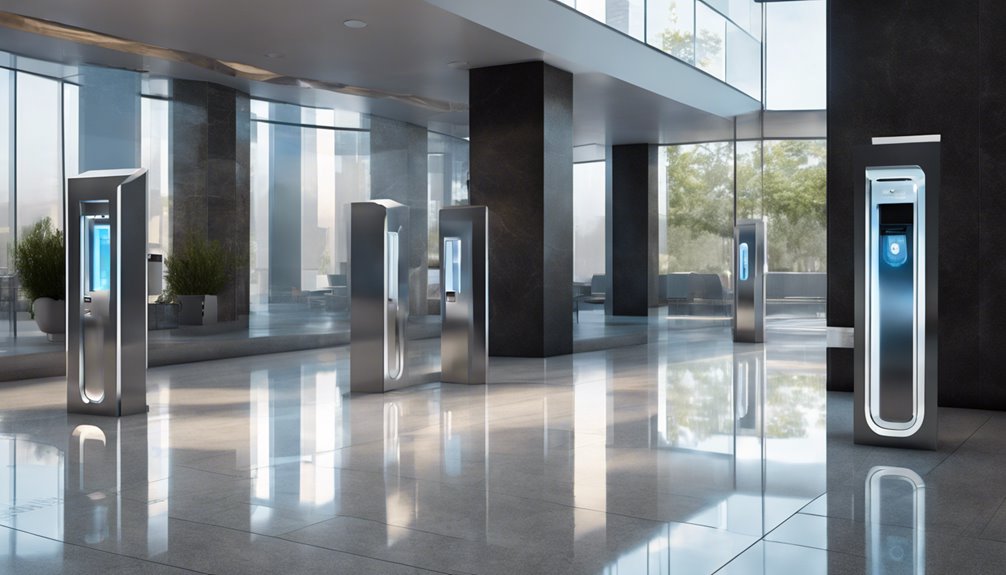
Integrating keycard lock systems with biometric technologies greatly enhances security and convenience in access control. This integration not only verifies user identity more robustly but also streamlines the access process.
Here are four critical benefits to take into account:
- Multi-Factor Authentication: Combining keycards with fingerprint or facial recognition creates a layered defense, considerably reducing unauthorized access risks. Additionally, AI-driven threat detection can anticipate and mitigate risks by analyzing user patterns in real-time.
- Improved Audit Trails: Biometric systems provide detailed logs of who accessed a facility, enhancing accountability and tracking.
- User Convenience: Users won’t need multiple credentials; a single biometrically-authenticated keycard suffices, speeding up access.
- Adaptability: The system can adjust to evolving security needs, allowing organizations to adapt as threats change without overhauling their entire access control framework. Additionally, leveraging AI-powered algorithms can enhance the effectiveness of biometric systems by continuously improving their accuracy and reliability over time.
Mobile and Digital Keycard Solutions
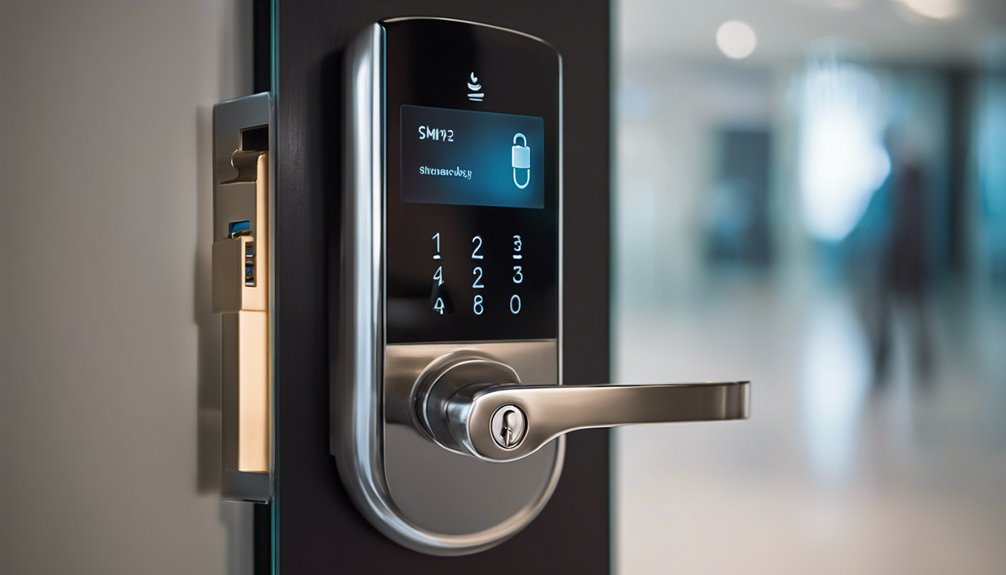
Mobile and digital keycard solutions offer significant advantages, particularly through touchless technology, which streamlines access while reducing contact points. In addition to their convenience, these systems can also include smart lock features that enhance overall functionality and security.
You’ll find that these systems incorporate enhanced security features, such as encrypted communication and real-time access monitoring, to protect sensitive areas. Additionally, integrating these solutions with smart home security systems can provide a seamless and comprehensive approach to protecting your property.
Touchless Technology Benefits
Touchless technology has revolutionized the way we approach security and convenience in keycard lock systems. By leveraging mobile and digital solutions, you gain numerous advantages:
- Seamless Access: You can open doors without physical contact, minimizing the risk of germ transmission.
- Enhanced User Experience: Quick and intuitive interfaces often lead to smoother entry, boosting user satisfaction.
- Data Analytics: Access logs and real-time data tracking empower administrators to manage access efficiently and respond to incidents swiftly.
- Integration Potential: These systems can easily integrate with other security measures, creating a cohesive, intelligent security environment.
Incorporating touchless technology means you’ll not only enhance security but also foster a more efficient access experience for users. Furthermore, utilizing AI-Powered Surveillance Cameras can further enhance overall security by providing continuous monitoring and advanced threat detection capabilities.
Enhanced Security Features
As technology evolves, keycard lock systems are embracing innovative security features that markedly enhance access control.
Mobile and digital keycard solutions offer advanced encryption protocols, making unauthorized access significantly more challenging. By utilizing near-field communication (NFC) and Bluetooth Low Energy (BLE) technology, these systems enable secure, seamless access without physical cards. With the rise of smart locks integrating advanced technology, keycard systems are expanding to include features that cater to modern security demands.
Additionally, two-factor authentication (2FA) integrates user verification, requiring not just a keycard but also a biometric or PIN entry. Real-time monitoring and activity logs further empower you to track access incidents immediately, adding an extra layer of accountability.
With cloud-based management systems, remote access control becomes not only feasible but also efficient, allowing you to update permissions and settings from anywhere, ensuring your access control remains robust and adaptable to evolving security threats. Furthermore, these systems can lower home insurance premiums as insurers view these systems as risk mitigators for theft and damage.
Industry Impact of Keycard Systems
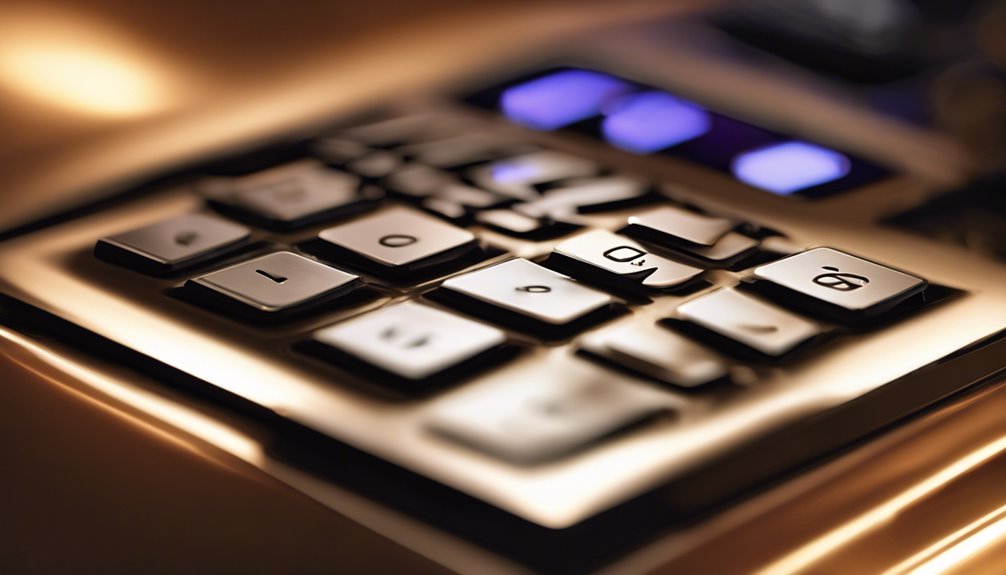
Keycard systems have revolutionized access control in various industries, enhancing security protocols while increasing operational efficiency. Their implementation brings several critical advantages:
- Streamlined Access Management: Assigning and revoking access becomes straightforward, ensuring appropriate permissions.
- Data Tracking: These systems generate detailed logs, allowing for audits and identifying potential security breaches.
- Cost Efficiency: Reduced need for physical lock and key replacements lowers maintenance costs and enhances budget management.
- Scalability: Keycard systems easily adapt to organizational growth, accommodating new users without significant infrastructural changes.
As you explore the impacts of these systems, it’s clear they not only secure environments but also optimize overall functionality, leading to smarter, more efficient operations across various sectors.
Enhancing Security and User Experience
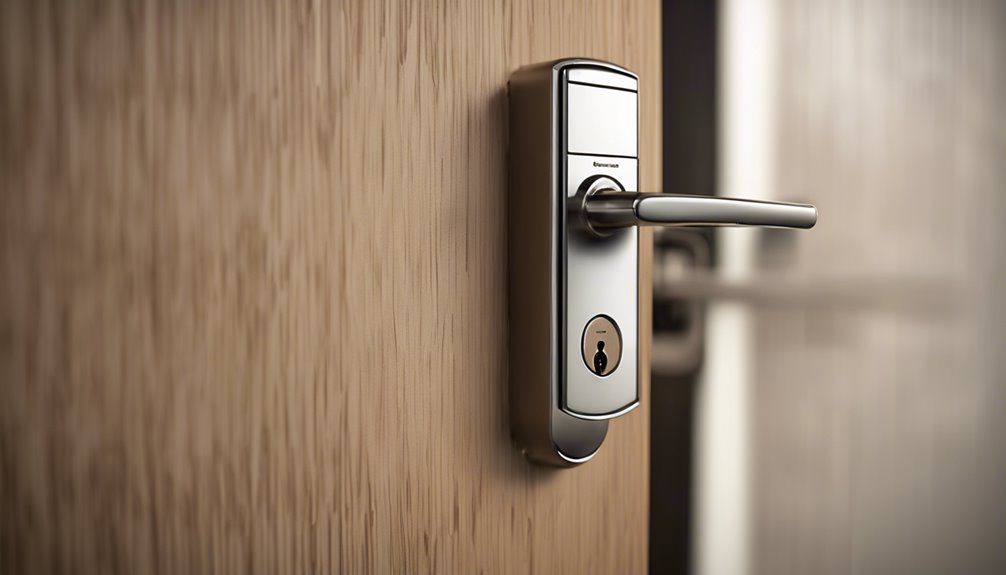
While implementing keycard lock systems primarily aims to bolster security, it equally enhances the user experience through features designed for convenience and efficiency.
These systems allow for swift, seamless access, reducing wait times and minimizing frustration often associated with traditional locks. You benefit from programmable access levels, ensuring that only authorized personnel can enter specific areas.
In addition, keycard systems provide audit trails, enabling you to monitor access patterns and increase overall accountability. The integration with mobile applications enhances usability, allowing instant updates and remote management.
With customizable alerts, any unauthorized attempts trigger notifications, ensuring immediate response. By prioritizing user-centric design alongside robust security, these systems make access control not just a necessity, but a streamlined experience.
Technology Trends Shaping 2025
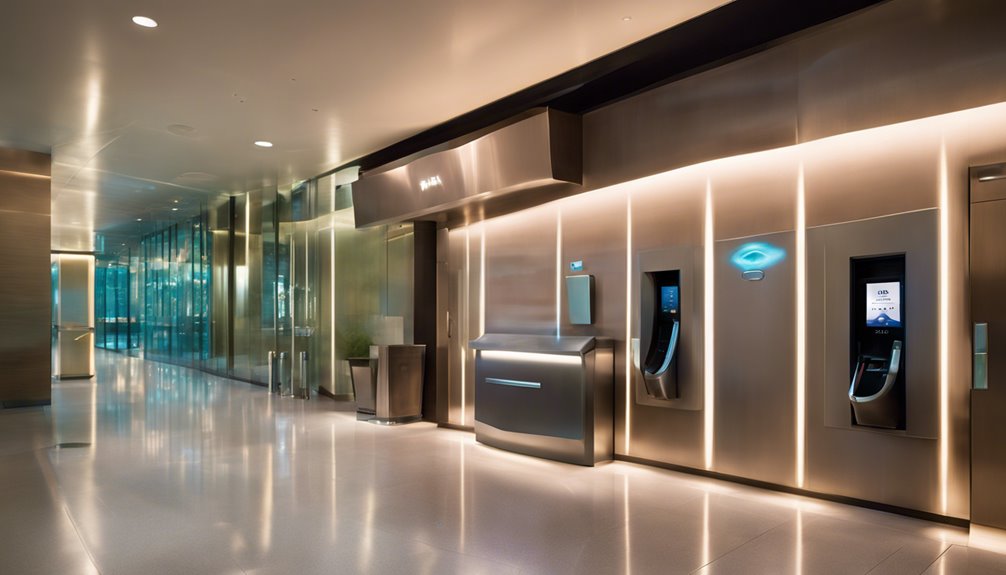
Emerging technology trends are poised to redefine access control systems by 2025, driving innovations that enhance both security and user engagement.
As you look to the future, consider these key developments:
- Biometric Integration: Enhanced biometric authentication methods, such as facial recognition and fingerprint scanning, are becoming standard to guarantee heightened security.
- IoT Connectivity: The rise of IoT devices will allow for real-time monitoring and control, enabling instant access management and alerts.
- Mobile Credentials: Expect increased adoption of mobile access solutions, which offer users the convenience of digital keys managed via smartphones.
- Cloud-Based Systems: Cloud technologies will facilitate remote access controls and centralized management, streamlining operations and reducing costs.
- The implementation of robust cybersecurity measures will be essential to protect these advanced access control systems from potential threats.
Embrace these trends to remain competitive in the evolving landscape of access control.
Future-Proofing Access Control Systems
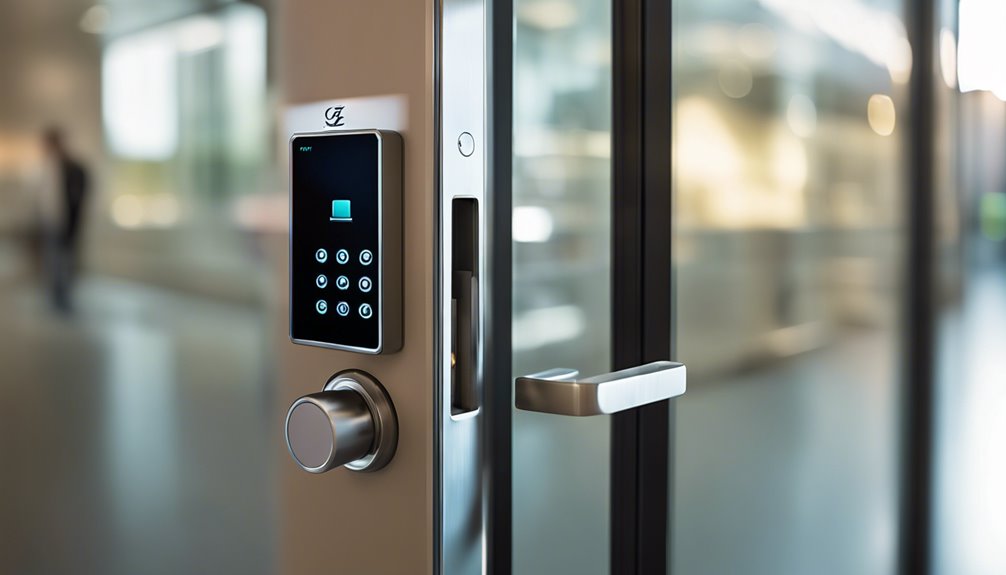
As access control systems evolve, it’s vital to adopt strategies that guarantee your infrastructure remains effective and adaptable. To future-proof your access control, consider modular designs, integration capabilities, and ongoing software updates. These strategies guarantee you can seamlessly upgrade components without complete system overhauls. Additionally, regular maintenance is crucial to prevent vulnerabilities and optimize performance, ensuring your system remains secure and reliable. Regularly checking system components’ lifespan is also essential to preemptively address potential failures and enhance overall security.
| Strategy | Benefits | Implementation Considerations |
|---|---|---|
| Modular Design | Flexibility and scalability | Assess current hardware compatibility |
| Integration | Interoperability with other systems | Choose standards-based solutions |
| Software Updates | Enhanced security and features | Schedule regular maintenance windows |
The Shift Towards Unified Solutions
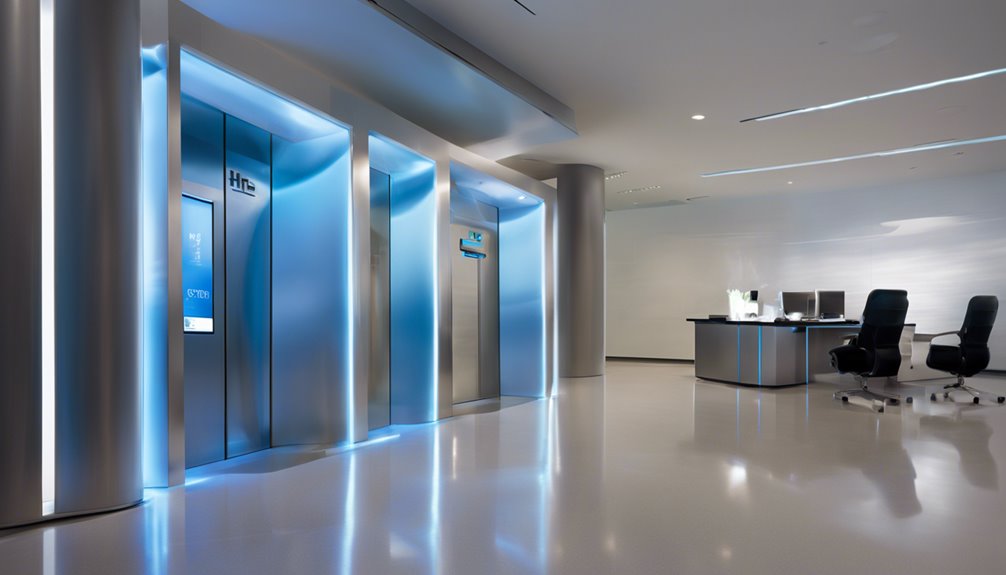
The landscape of access control is shifting towards unified solutions that streamline management and enhance security. This change reflects a growing need for systems that integrate various functionalities seamlessly.
As you explore these unified solutions, consider the following critical elements:
- Centralized Management: Control all entry points from a single interface, reducing administrative overhead.
- Interoperability: Guarantee compatibility with existing systems to facilitate upgrades without significant investment.
- Scalability: Implement systems that grow with your organization’s needs, reinforcing both physical and digital security.
- Data Analytics: Use insights from access data to enhance security protocols and optimize resource allocation.
Adding monitored security systems with features like two-factor authentication can further strengthen the overall defense against unauthorized access.
Embracing this shift not only modernizes your access control but also aligns with future technological advancements.
Frequently Asked Questions
What Are the Costs Associated With Implementing Keycard Lock Systems?
When considering keycard lock systems, you’ll encounter several costs.
Initial expenses include hardware, such as locks and readers, which can vary widely based on sophistication. You’ll also need to factor in installation fees, which depend on the complexity of your property.
Additionally, ongoing costs for software maintenance, updates, and potential card replacements will arise.
Finally, training personnel to manage and operate the system effectively is essential, impacting your overall budget.
How Does Access Control Impact Employee Productivity in Businesses?
Access control considerably impacts employee productivity by streamlining workflows and enhancing safety.
When you implement effective systems, employees experience less downtime caused by security checks or access issues. Efficient entry reduces frustration, allowing teams to focus on their tasks.
Furthermore, a secure environment fosters trust and morale, encouraging collaboration.
Ultimately, investing in access control technology not only safeguards assets but also boosts overall productivity by minimizing disruptions and maximizing operational efficiency.
What Are Common Maintenance Practices for Keycard Systems?
To guarantee ideal performance of keycard systems, you should regularly inspect and clean card readers to prevent dirt buildup.
It’s essential to update software and firmware to patch vulnerabilities.
Check batteries in access control panels and replace them proactively to avoid system downtime.
Additionally, regularly audit access permissions to maintain security integrity.
Document all maintenance activities meticulously to track system performance and mitigate issues, promoting a reliable and efficient access control environment.
Are Keycard Systems Scalable for Small Businesses?
Imagine releasing your business’s potential with a seamless access control solution—keycard systems fit the bill for small enterprises.
Their modular nature lets you easily scale as your team grows. You can start small, adding users or doors as needed, without overhauling the system.
Versatile and cost-effective, these systems adapt to your security requirements, ensuring you maintain control without unnecessary complexity.
Fundamentally, you’re investing in a future-ready solution as your business flourishes.
How Do Keycard Systems Handle Power Outages or Malfunctions?
Keycard systems typically incorporate backup mechanisms to handle power outages or malfunctions. Many units include battery backups that maintain functionality during outages, allowing continued access.
Additionally, some systems feature fail-safe or fail-secure modes, guaranteeing either secure locking or immediate access. Regular maintenance and testing of these systems are essential to avoid potential vulnerabilities.
Conclusion
As the landscape of access control evolves like a phoenix rising from the ashes, keycard lock systems are transforming into more than just simple security measures. They symbolize a bridge between traditional safety and the future, where biometric scans and mobile credentials weave a tapestry of seamless protection. By embracing these advancements, you’re not just enhancing security; you’re crafting a digital fortress that adapts to the ever-changing demands of an interconnected world, ensuring peace of mind in every keycard access.

